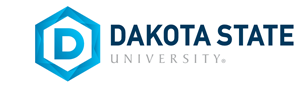Date of Award
Summer 7-2024
Document Type
Dissertation
Degree Name
Doctor of Philosophy in Cyber Defense (PhDCD)
First Advisor
David Kenley
Second Advisor
Jon Atack
Third Advisor
Gabe Mydland
Abstract
Thought reform – also known as brainwashing or psychological manipulation – is a profound threat to the security of the human mind. This complex form of social engineering is associated with terrorist movements, domestic abuse, destructive cults, and many other forms of totalitarianism present in society (Stein, 2017). Thought reform can result in various harms that range in severity depending on each person’s individual experience (Lalich & Tobias, 2006; Stein, 2017). The work of security and privacy professionals inherently concerns psychological manipulation – thought reform often occurs over the internet (Hassan & Shah, 2019), most data breaches occur due to one or more people being maliciously influenced by attackers (Hadnagy, 2018), and the topics of coercion, psychological manipulation, and undue influence have garnered increased attention from privacy and cybersecurity scholars in recent years due to their central role in perpetuating online privacy harms (Citron & Solove, 2022; Susser et al., 2019). The primary tactic for defending people against all forms of psychological exploitation is education and awareness about scams, fraud, and the ways in which attackers exploit human beings (Hadnagy, 2018).
Scholars have identified increasing education and awareness about thought reform as crucial for mitigating the many threats that this type of scam poses to individuals and society (Atack, 2016; Hassan, 2018; Lalich & Tobias, 2006; Langone, 1993; Lifton, 2019; Singer, 2003; Stein, 2017). Despite this recognition, few research studies have discussed or investigated the level of knowledge people have about this security threat. Thus, the purpose of this research study was to address this research gap by doing the foundational work of collecting and analyzing thought-reform literacy data from a geographically-defined population for the first time. This was achieved by developing the Thought-Reform Literacy Questionnaire for South Dakotan Laypeople (TRLQ-SDL) – a novel survey designed to measure thought-reform knowledge among South Dakotan adults. This was administered as a mail survey in South Dakota and a sample of 147 respondents was collected and analyzed to estimate the status of thought-reform literacy in the entire state population.
This dissertation study investigated the primary research question “What is the degree of thought-reform literacy among adult South Dakotan laypeople?” Six additional research questions investigated possible correlations between literacy scores on the TRLQ-SDL and five demographic predictor variables as well as belief in self-vulnerability to thought reform. The overall weighted mean composite thought-reform literacy score for the full sample was 37.03, or 78.79% correct (out of the maximum score of 47), which rose to 38.89 (82.74% correct) with outlier scores removed. A hierarchical multiple regression analysis was conducted on the five demographic predictor variables and no statistically significant correlation was found between any demographic variable and the composite literacy scores.
A point-biserial correlation analysis found a low to moderate positive correlation between those who were humble about their vulnerability to thought reform and composite literacy scores. A separate regression analysis was conducted to predict the score difference between those who were humble and those who believed they were immune to thought reform; the model predicted that those who were humble scored an average of 1.65 points higher after outliers were removed from the sample. This result was statistically significant. This finding resulted in one of the six null hypotheses tested in this study to be rejected in favor of the alternative hypothesis that there is a positive correlation between respondent humility and knowledge about thought reform as measured by the TRLQ-SDL.
Recommended Citation
Steinhagen, Dustin Rozario, "Defending the security of the mind: A mail survey of thought-reform literacy in South Dakota" (2024). Masters Theses & Doctoral Dissertations. 465.
https://scholar.dsu.edu/theses/465

